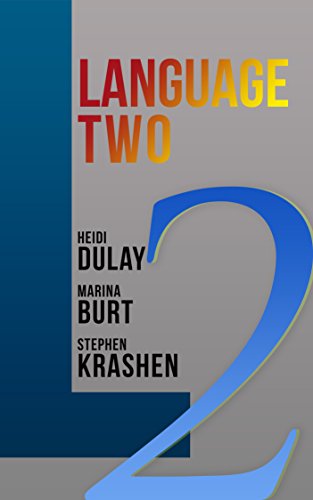Language Two by Heidi Dulay, Marina Burt, and Stephen Krashen Link to heading
Summary Link to heading
“Language Two” by Heidi Dulay, Marina Burt, and Stephen Krashen is an influential book in the field of second language acquisition. The book explores the processes through which people learn a second language, examining various linguistic, psychological, and social factors that influence language acquisition. It discusses different theories and models of second language learning, integrating insights from research studies. The authors delve into both naturalistic acquisition (language learned outside formal settings) and classroom-based learning, offering a comprehensive overview of the dynamics involved in acquiring a second language.
Review Link to heading
“Language Two” has been well-received in academic circles for its detailed analysis of second language acquisition. The collaboration between Dulay, Burt, and Krashen brings together diverse perspectives and expertise, enriching the discussions within the book. A notable strength is the synthesis of empirical evidence and theoretical models, making complex ideas accessible to readers with varying levels of expertise in linguistics. However, some critiques point out that certain models may be oversimplified or may not adequately address the wide variability in individual language learning experiences.
Key Takeaways Link to heading
- Comprehensible Input Hypothesis: One of the key concepts discussed by Stephen Krashen is that language acquisition occurs most effectively when learners are exposed to language input slightly above their current proficiency level.
- Affect in Learning: The book highlights the importance of affective factors—such as motivation, attitude, and anxiety—influencing the success of language learning.
- Error Correction: The authors discuss differing views on the role of error correction, suggesting that over-correction can be detrimental to language learners’ confidence and progress.
- Natural Order Hypothesis: There is a natural sequence in the acquisition of grammatical structures, and this order is consistent across learners of a given language.
- Monitor Model: The book discusses the ‘monitor’ function, where language learners use their knowledge of grammar rules to correct errors in their spoken or written language.
Recommendation Link to heading
“Language Two” is an essential read for educators, language instructors, researchers, and students interested in the field of second language acquisition. Its comprehensive scope and integration of theory with practical insights make it valuable for those looking to deepen their understanding of how languages are learned. The book’s balanced approach to explaining complex theories and its focus on practical implications ensure that it is useful both for academic study and for application in teaching and learning contexts.
